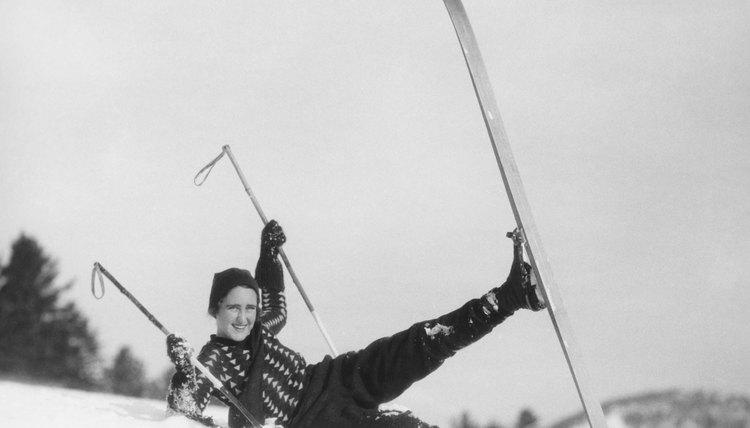Sports in the 1930s in America

The financial downturn of the Great Depression left many people in the 1930s out of work or out on the streets. Sports provided an inexpensive way for people to forget their troubles for a few hours, whether they were playing the game, watching it live or listening to it on the radio.
An Olympic Event
In 1932, the Olympic Games came to the United States. In the winter games in Lake Placid, the American bobsled team took the gold medal. Eddie Eagan, who had won a gold for boxing in the 1920 Olympics, was a member of the team, making him the only athlete in history to win a gold at both the winter and summer games. Women could run the 80-meter hurdles for the first time during the summer games in Los Angeles. Multi-sport athlete Babe Didrickson broke the world record as well as taking a second gold in the javelin. Only six events were open to women at the time -- discus, high jump, 100-meter dash and 400-meter relay, in addition to the hurdles and javelin.
Take Me Out to the Ballgame
Team sports such as baseball provided an escape from the world's problems for the average spectator. Radios became affordable enough for most families to enjoy the Golden Age of Baseball over the air, rooting for favorite players that included Babe Ruth, Lou Gehrig, Hank Greenberg and Joe DiMaggio. Stadiums lured visitors with inexpensive food, free admission for women and contest prizes such as groceries and cash. The first nighttime game took place in 1935 in Cincinnati, making it possible for blue-collar workers to see games after work. Another game featuring a ball started gaining fame during the 1930s, too. Basketball held its first national collegiate tournament in 1937 in Kansas City, Missouri. Professional teams such as the New York Renaissance and the Harlem Globetrotters were the best-known teams of the decade.
Individual Sports
Boxing fans gathered to listen to the Friday Night Fights that aired over the radio. Many a young man got involved in boxing to while away the hours and to compete for small purses that could put a little money in his pocket. In June 1937, Joe Lewis began his reign as world heavyweight boxing champion, a title he wouldn't resign until nearly 12 years later. There was also a surge in surfing activity during the 1930s, with organized surfing clubs appearing on the East and West Coasts, as well as in Daytona and Miami. The sport changed forever with the invention of the tail fin in 1934, enabling riders to turn the board by leaning instead of twisting their feet.
Man and Beast
By the early 1900s, horse racing had practically disappeared in the U.S., with only 25 tracks of 300 remaining open. The 1930s saw a revival of the sport, with legalized betting in states, such as California. The excitement of the powerful animals churning up the turf, combined with a potential poverty-ending payoff, drew visitors to the tracks. Cash purses of up to $100,000 tempted investors to purchase horses, pay to stable and train them and then race the four-legged beasts. The decade's most famous horse, Seabiscuit, came from underdog status to beat the seasoned favorite, War Admiral, in 1938 to win the Santa Anita Handicap.
References
- International Olympic Committee: Fact Sheet - Women in the Olympic Movement
- Pearson Education: Olympics Timeline
- Sports Reference: Athletics at the 1932 Los Angeles Summer Games
- A & E Bio: Joe Louis Biography
- Wessels Living History Farm: Having Fun During the Depression
- WGBH Educational Foundation: Racing in the Depression
Writer Bio
Indulging her passion for vacation vagary through the written word on a full-time basis since 2010, travel funster Jodi Thornton-O'Connell guides readers to the unexpected, quirky, and awe-inspiring.
